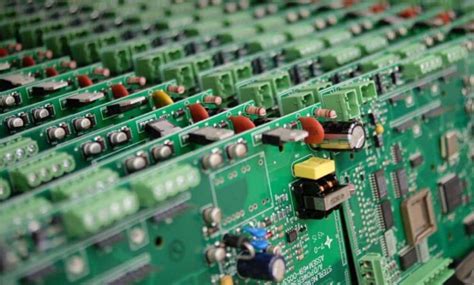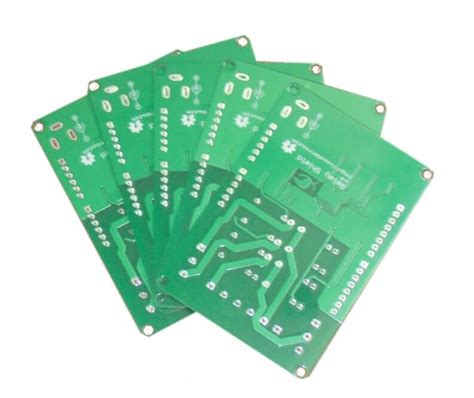PCB made by thermal transfer
Authentic thermal transfer requires tools such as a small electric drill, copper-clad board, and etching liquid like other manual plate making. The difference is that it also requires a laser printer, self-adhesive paper, and an electric iron.
Laser printer: Very expensive, a new one costs several thousand, and even a second-hand one costs several hundred. I don’t have money, so I have to use the laser printer in my friend’s laboratory, so I borrow it as much as possible. General printing companies do not provide self-adhesive paper printing services, and they probably don’t have tools such as protel in their computers. Therefore, friends who really can’t use laser printers, please go directly to the second part.
The reason why laser printers are used instead of ink printers is that the laser printer uses a toner cartridge inside, which contains solid toner, while the ink printer uses an ink cartridge, which is not only liquid, but also easy to carry a slight ink on the entire sheet of paper, so that it will not be corroded cleanly during corrosion, and places that should not be connected may be short-circuited.

Self-adhesive paper: It’s a little expensive, 4 yuan per sheet (0.25m*0.25m), because I didn’t buy it myself, and I only bought two sheets, so it might be expensive.
Electric iron: If you don’t have one at home, you can find an old one yourself. A new and good one costs 120 yuan. I bought it at Suning Appliance.
Draw the PCB: Draw the circuit schematic, and then draw the PCB. Note that all the wires should be laid on the bottom layer, that is, Bottom Layer. If you want to jump the wire, it doesn’t matter. Just put a via.
- Then the wire on the top layer will be connected with a wire. In addition, pay attention to the pad as large as possible, preferably not less than 2mm, and the hole is preferably 1mm, so that it is not easy to corrode during corrosion.
- The wiring should also be as thick as possible, and it is recommended to be more than 1mm. In protel, the shortcut key for converting mil and mm is the letter “q” (when the input method is not turned on).
Printing: Use a laser printer to print the bottom layer onto the self-adhesive paper (note that it is the slippery paper of the self-adhesive paper, that is, tear off the tape first). Protel’s layered printing needs to be set up several times, so I have to write another article, otherwise this article will become an old woman’s foot wrap – smelly and long.
Thermal transfer: After printing, put the printed wiring diagram on a piece of copper-clad board of appropriate size, of course, the side with toner faces the side with copper.
- The copper board should be relatively clean, at least not greasy and dirty, otherwise the transfer will not be clean and the corrosion will not be thorough. After placing them, fix the drawing and the copper plate tightly together.
It is best to tape all four sides.
Now turn on the iron, the temperature should be slightly higher, heat it back and forth on the paper, and press it down slightly. After heating for a while (about 3 minutes), when the paper is not too hot, slowly lift a corner to see if the black toner has been printed on the copper plate.
If it is not complete, reheat it.
Remember that the drawing and the copper plate must not be relatively displaced during the process, otherwise the picture will be blurred. Generally, it is easy to complete the transfer after getting familiar with it. If there is a little disconnection, you can use correction fluid or a brush with paint to fill it.Generally, you will feel a little successful after the transfer is successful .
Corrosion: Corrosion is very simple. Because I did not operate it properly at the beginning, I almost felt discouraged and thought it failed. Here I remind you that you should not put too little ferric chloride (painful lesson), because the iron atoms in it are used to replace copper.

How can such a large copper plate be made with only a little iron?
Therefore, the amount of ferric chloride should be determined according to the size of your copper plate. Generally speaking, 40% ferric chloride is matched with 60% water (online information, but I don’t understand how solids and liquids are divided into percentages?). In short, the more concentrated the better (it’s a bit wasteful, haha). And the higher the temperature, the faster the corrosion.
I did it this way: first take a plastic box that is not much larger than the copper plate to be corroded to hold the ferric chloride solution (dissolve it with warm or hot water), then put the plastic box in a washbasin filled with boiling water, stir it with chopsticks (you can’t use it to eat later), and it will be corroded clean in about 5 to 15 minutes. You can turn it over and watch it during the process.
- Once the part that needs to be corroded has been corroded, take it out to avoid accidentally corroding the useful ones. Take it out and rinse it in the water in the basin, wipe it dry, wipe off the carbon powder, and then rinse it with tap water, and you will see a very beautiful board (the places that have been repaired with correction fluid before will not be so beautiful, but it will not affect the use).
Punching: Punching holes is not easy to say. Whether it is a homemade electric drill or a purchased electric drill, most drill bits will have swings. In this way, the solder pad is not punched, and the wires next to it are broken. Of course, I have come up with a countermeasure (hoho). First, use a hammer to nail the center of the hole in the solder pad. The nail is about 0.5mm deep (the general single-sided copper clad board is about 2mm thick), then take the drill bit and put it on this small pit, hold it steady, and then turn on the power of the electric drill. In this way, the electric drill with a large swing generally cannot run around.







